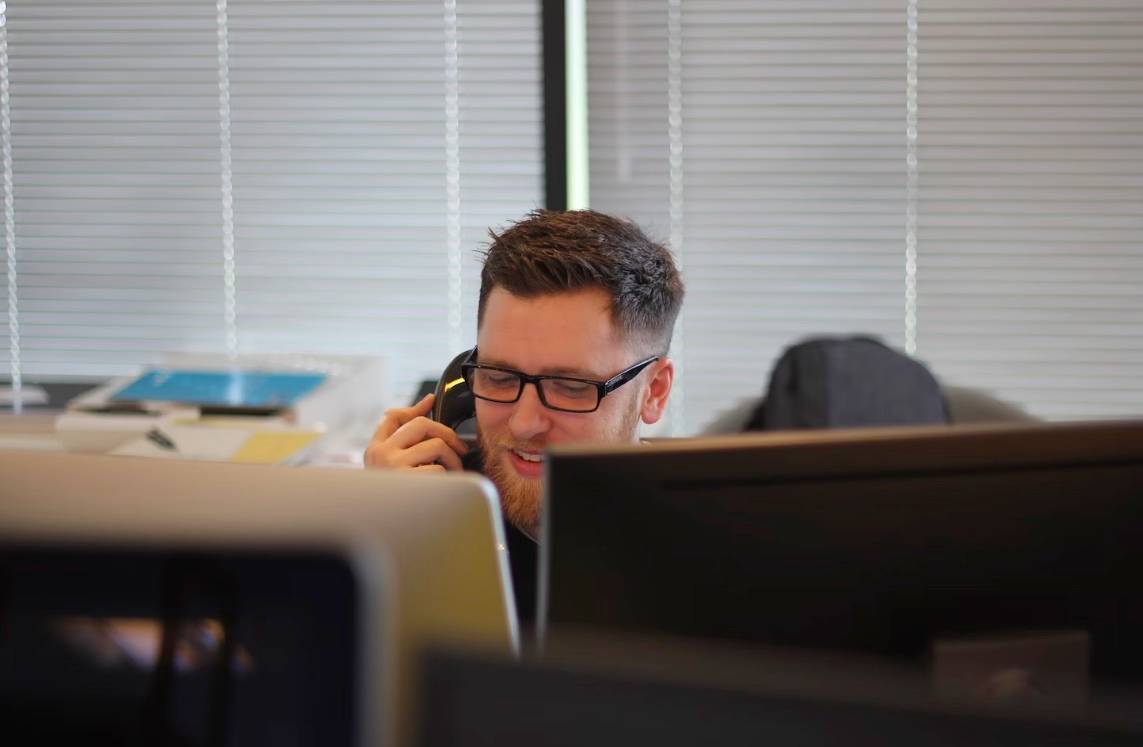Whether you're an experienced professional or just starting out, the key to a successful branding proposal is understanding your client's needs and clearly communicating how you can help. Of course, as anyone who’s started at that blank page can attest, that part can be easier said than done.
In this article, we'll share the guiding principles behind the perfect branding proposal, designed for maximum clarity and impact. We'll cover everything from outlining your strategy to presenting your ideas in a way that's easy to understand. By the time you're done reading, you'll have the tools to write a proposal that not only speaks to your potential client's needs but also highlights your unique skills and approach.
What is a branding proposal?
A branding proposal outlines how you can help a client develop or enhance their brand identity. It also acts as your pitch, showcasing your understanding of their brand, their market, and their challenges (not to mention your expertise, creativity, and strategic thinking).
A branding proposal details:
- The services you offer
- How your services align with the client's needs
- Anticipated benefits from working with you on a branding project
A good branding proposal covers everything from initial research and brand analysis to the development of branding strategies and the execution of specific branding elements like logos, color schemes, and marketing materials. A well-crafted proposal not only persuades the client of your value but also sets the tone for a collaborative and successful working relationship.
Steps to writing a branding proposal: Key elements to include
While the format of branding proposals is fairly basic the content should be anything but. Your proposal should be tailored to each client's specific needs and situation and designed to show off your branding chops. Here is what you need to include in yours…
Read next: How to create a cover letter for proposals
1. Start with market research
This is an essential step in writing a branding proposal, like laying the foundation for a building. It's about getting to know the landscape you're about to enter. Not just a cursory look at the industry but a thorough understanding of who you're talking to, who else is talking to them, and the environment in which your client's brand will take root.
Market research helps you combine all the pieces - trends, customer behavior, competitor strategies - and see the big picture. The insights you gather here will shape your brand strategy, ensuring it is based on fact, not supposition.
2. Identify client requirements
This step involves having a real, insightful conversation with your customer to determine what they want their brand to represent and achieve. Taking time and making the effort to truly understand their deeper goals, values, and aspirations. This means lots of thoughtful, targeted questions and active listening to the answers. This is one of those scenarios where there really are no silly questions. Put the kettle on and leave your ego at the door. Comprehensive fact-finding at the start gives you the fullest picture possible and your proposal the best chance of success.
3. Define your brand strategy
This is where you create a clear, strategic plan that captures the heart and soul of the brand. A narrative that resonates with your prospective client and demonstrates how you will differentiate their brand from the competition.
In this phase, you define how the brand will present itself, identifying the unique aspects that set the brand apart from the competitors and using them to gain a benefit. This means looking at the brand's strengths & weaknesses, the opportunities it can benefit from, and the challenges it might face.
This is where you create your vision for the brand's voice, visual identity, and overall image to be conveyed on all platforms.
4. Outline your services and client benefits
This section is where you bridge the gap between what you offer and why it matters to them. Let's delve into how you can articulate your services and their advantages in a way that resonates with your client, ensuring that your proposal stands out as both professional and deeply attuned to their specific needs.
- Clearly Define Your Services: Begin by explicitly listing the branding services you offer. Be as specific as possible, so the client understands exactly what you bring to the table.
- Link Services to Client Needs: Demonstrate how each service addresses a specific challenge or goal they have. For instance, if one of their pain points is brand recognition, explain how your visual identity design can make your brand more memorable.
- Highlight the Benefits: After linking your services to their needs, use some bullet points to clearly articulate the benefits they will receive. This can include increased brand awareness, better customer engagement, differentiation from competitors, or enhanced brand loyalty. Use data or case studies to back up your claims and make them more convincing.
- Tailor Your Approach: Show that you understand the client’s unique market position and challenges, tailoring your service descriptions to reflect their specific situation.
- Include Success Metrics: Outline how you will measure the success of your services. Whether it's through increased web traffic, sales growth, customer feedback, or social media engagement, let the client know how you will track and report progress.
- Offer Flexibility: Acknowledge that every client might require a different approach. Offer flexibility in your services, suggesting how they can be adapted or scaled according to the client's changing needs.
By outlining your services in relation to the client's needs and the tangible benefits they will receive, you make your proposal more compelling and client-focused. This approach not only showcases your expertise but also demonstrates a genuine understanding and commitment to helping your client achieve their branding goals.
5. Detail your pricing structures
This is an essential step in which you present the costs of your services clearly and transparently.
Your pricing plans give the prospective client a clear idea of what they're investing in and why it's worthwhile. Link your numbers to the value they bring so they can see you haven’t plucked them out of thin air! For example, if a service includes a detailed market analysis or a customized design, you explain this and show the customer the expertise and effort behind the expense.
Many people can be coy when it comes to the numbers but the more up-front, the better, here. It helps build trust, setting the tone for what is (hopefully) a fruitful, long-term relationship.
6. Add a project timeline
Project timelines give you and the client a clear idea of when the individual parts of the branding project will take place. Divide the entire branding process into research, design, and implementation phases and give each phase a deadline.
This phase is crucial for accountability and doubles down on the transparency demonstrated in your pricing structure. By creating a detailed timeline, you show the client that you have a structured plan. This also helps to manage expectations and avoid confusion, as the client knows what to expect and when at each project stage.
Example of a branding proposal template
Using a branding proposal template saves time and keeps you on track with the structure and content.
Qwilr’s branding proposal templates not only look visually impressive with their interactive elements, they are also easily customizable, and the built-in analytics enable you to track user engagement so you can refine and improve it over time.
Let's break down what this free proposal template includes:
- Purpose: This is where you set the stage, explaining the goals and objectives of the branding project. It's about getting clear on what you aim to achieve.
- Identity: In this section, you delve into what makes the brand unique: the brand's personality, values, and story.
- Solution: Here, you outline your plan to meet the client's needs. It's where your creativity and strategic thinking come together to provide effective solutions.
- Market: This part shows your understanding of the market environment, the competition, and who the brand is talking to – the target audience.
- Brand Document: This section is about the tangible outcomes, like brand guidelines and visual identity documents, that encapsulate the brand's new look and feel.
- Messaging: Focus here on how the brand will communicate – its tone, key messages, and overall narrative across different platforms.
- Price Quotation: A clear and detailed breakdown of the costs associated with your services. This section is crucial for transparency and to ensure the client understands the value they are receiving.
- Conclusion: The wrap-up summarizes the main points and reinforces the benefits of choosing your approach.
FAQs
What's the best format for a branding proposal?
The ideal format for a brand strategy proposal combines clarity with visual appeal. It should be organized into different sections, such as purpose, brand identity, solutions, market insights, and pricing, to ensure the proposal is both easy to understand and appealing.
How long should a typical branding proposal be?
A typical brand collaboration proposal doc should be long enough to cover all the essential aspects but short enough to keep the client interested. It is usually between 10 and 20 pages. The goal is to be thorough yet brief, giving a clear and engaging overview of your strategy and the benefits to the client without overwhelming them with too much information.
How often should you follow up with a client after submitting a branding proposal?
After you submit a branding proposal, a good rule of thumb is to contact the client within a week to determine their interest and clarify any questions. Following up regularly, but not too frequently – perhaps every two to three weeks – can effectively maintain engagement and show enthusiasm without coming across as pushy or overbearing.
Proposals with personality: the key to landing branding projects
Writing an outstanding brand proposal is all about combining clarity with creativity. Don't be afraid to bring some color and personality into your proposal.
Every part of your proposal plays an important role, from defining your purpose and brand identity to offering solutions and understanding the market. Remember that your proposal shouldn't only be informative but also appealing and memorable to your customers.
And when it comes to putting all these pieces together, Qwilr can save time and help you shine. It simplifies the process and allows you to create visually appealing and interactive branding proposals easily. Apply what we've discussed here to your next proposal and see how Qwilr can help you make sure your first impression is a lasting one.
Ready to get started? Check out the Qwilr branding proposal template now!
About the author

Brendan Connaughton|Head of Growth Marketing
Brendan heads up growth marketing and demand generation at Qwilr, overseeing performance marketing, SEO, and lifecycle initiatives. Brendan has been instrumental in developing go-to-market functions for a number of high-growth startups and challenger brands.


